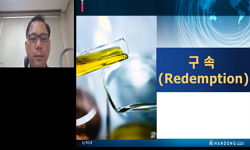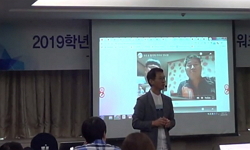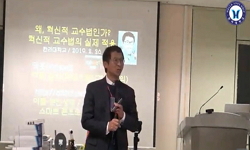This article aims to analyze and apply to the Great Revival Movement of Pyugyang 1907 by using the revitalization movement model of Anthony Wallace with the complement of the innovation model of Homer Barnet. Socio-cultural change is the result of any...
http://chineseinput.net/에서 pinyin(병음)방식으로 중국어를 변환할 수 있습니다.
변환된 중국어를 복사하여 사용하시면 됩니다.
- 中文 을 입력하시려면 zhongwen을 입력하시고 space를누르시면됩니다.
- 北京 을 입력하시려면 beijing을 입력하시고 space를 누르시면 됩니다.
https://www.riss.kr/link?id=A82435407
- 저자
- 발행기관
- 학술지명
- 권호사항
-
발행연도
2007
-
작성언어
-
-
주제어
교회변화 ; 재활성화 ; 부흥운동 ; 혁신 ; 상황화 ; 회개 ; 세계관 ; Culture Change ; Revitalization ; Revival Movements ; Innovation ; Contextualization ; Conversion ; Worldview
-
KDC
230
-
등재정보
KCI등재
-
자료형태
학술저널
-
수록면
1-21(21쪽)
- 제공처
-
0
상세조회 -
0
다운로드
부가정보
다국어 초록 (Multilingual Abstract)
This article aims to analyze and apply to the Great Revival Movement of Pyugyang 1907 by using the revitalization movement model of Anthony Wallace with the complement of the innovation model of Homer Barnet. Socio-cultural change is the result of any transformation of customs, values, and ways of thinks or behaviors in a society. The religious meaning of this change is the worldview change in a society as a form of religious conversion. Wallace defines revitalization movement as “a deliberate, organized, conscious effort by members of a society to construct a more satisfying culture.” In the process of revitalization there are three factors presented: (1) the perception of the culture as a system; (2) dissatisfaction with that system; and (3) an organized effort to change that system. The process of revitalization movement shares a common structure, consisting of the following five stages: (1) steady state; (2) period of increased individual stress; (3) period of cultural distortion; (4) period of revitalization(in this period there are six functions: formulation of a code, communication, organization, adaptation, cultural transformation, and routinization); and (5) new steady state. Anthony Wallace’s anthropological model of revitalization movement, in combination with Homer G. Barnet’s model of innovation can provide a useful framework for examining and understanding of the Great Revival Movement of Pyengyang 1907. He defines an innovation as “any thought, behavior, or thing that is new because it is qualitatively different from existing forms.” The emphasis in this model is on the reorganization
of ideas rather than on quantitative variation. Culture change takes place not when there is just more or less of the same thing, but when idea, a behavior pattern or a material object is qualitatively different from existing forms. He has contributed to the understanding of culture change as he suggested the theory focusing on the innovator’s behavior pattern. As an outsider the role of the missionary is important, but the change agent is the indigenous leadership, the one who mainly influences on the decision on the reception of the socio-cultural change. The change by the outsider(or missionaries) may be destructive so that the cross-cultural
witness should attempt to contextualize the gospel through a careful examination of the local culture, because they are the persons who use to bring sociocultural changes as well as individual change. In the end of the Chosen Dynasty, people had experienced a religious vacuum. The reasons were because Korean traditional religions, Buddhism and Confucianism, has lost their ability to provide people mental framework. This religious vacuum caused people to desire for fervently seeking a new religion. Also the Tonghak revolution and Chinese-Russian war and following the assassination of the queen Min drove people into fear and frustration. The year 1884 was one of the darkest eras in the Chosen history because there was no sign to resolve the current situation. Endemic disease spread all around the country accelerated the crisis and fear felt by the people.
So people were trying to seek some solution to resolve the crisis. The stress level of people became increased, in fact, facing the crisis the colonial Japan began to occupy the country with power. In this circumstances there was a candle ignited for a revival by American Methodist missionary Hardie from Wonsan in 1903 August. In his confession we can find a transforming code for overcoming the national crisis and desperate situation, which was radical and super cultural. The revival movement started from Wonsan became spread to Kangwon province, Seoul, Gaesung, Pyugyang, and all around the country. Finally this movement exploded at Changdaehyun church in 1907 January. At that time, there were around 1,000 men for bible studying meeting and
missionaries gathered for noon prayer meeting.
목차 (Table of Contents)
- I. 들어가는 말
- II. 문화변화 이론
- III. 문화변화의 대행자의 역할
- IV. 문화변화 모델을 통한 평양 대부흥운동 분석 및 적용
- V. 나가는 말
- I. 들어가는 말
- II. 문화변화 이론
- III. 문화변화의 대행자의 역할
- IV. 문화변화 모델을 통한 평양 대부흥운동 분석 및 적용
- V. 나가는 말
동일학술지(권/호) 다른 논문
-
- 한국기독교학회 선교신학회
- 권오훈(Kwon, O-hoon)
- 2007
- KCI등재
-
- 한국선교신학회
- 김은수(Kim, Eun-soo)
- 2007
- KCI등재
-
- 한국선교신학회
- 장남혁(Jang, Nam-hyuck)
- 2007
- KCI등재
-
- 한국선교신학회
- 이후천(Lee, Hu-chun)
- 2007
- KCI등재





 스콜라
스콜라






